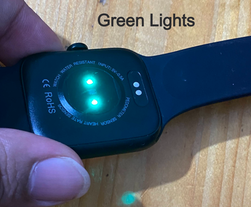

3,217


14,082


4,046

13,899

8,212
Updated: Jul 14, 2023
We can operate almost everything from the remote by sitting in the office or while relaxing on a beach during the holiday. Thanks to smart home technologies; these flexibilities which made our homes smarter than earlier. Imagine that all the smart devices you buy for your home could work together from the same device and same application regardless of who made them. I know, this was a dream for all of them to use some kind of smart home device. Finally, the industry unites all of them together and establishes a new smart home standard called Matter.
Matter-certified devices are very easy to integrate into your smart home. Everyone in the family can control the home appliances through their preferred voice assistant or app (Alexa, Hey Google or Siri). That’s because Matter doesn’t mind if you use an Apple device, Android device, Alexa-enabled device.
The future of the smart home is called Matter
Matter, formerly Project Connected Home over IP (CHIP), is a proprietary standard for home automation. The aim was to reduce fragmentation across different vendors and achieve interoperability among smart home devices from different manufacturers. Though this project was started by Amazon, Apple, Google, Comcast, and Zigbee Alliance (known as Connectivity Standards Alliance or CSA), later on, IKEA, Huawei, and Schneider get involved in it. Originally, this discussion started in December 2019, but the first version of the specification was published on October 2022 and the Product certified with Matter is supposed to be available by the end of 2022 or early 2023. And here we go, Apple announced their first Matter-certified device in January 2023 as HomePod 2.
Matter devices can communicate via Thread, Wi-Fi, Bluetooth LE, or bridges. The Matter will use those existing networking technologies to unify smart home platforms. It will incorporate new communication standards and change the way it connects the controlling devices to the smart home equipment. The Matter is a seal of approval that devices will work seamlessly together – today and tomorrow. Matter creates more connections between more objects, simplifies development for manufacturers, and increases compatibility for consumers. Watch the video to learn more about this.
Manufacturers who adopt Matter from day one will also benefit - their products will be immediately compatible with Apple’s HomeKit, Amazon’s Alexa, and Google’s Assistant, without them needing to support different protocols and keep on top of each. The existing devices still will work with the current process. But a few manufacturers' devices are upgradeable to align with Matter's standard and those will be upgraded in future. Though Matter works with technology standards such as Wi-Fi and Bluetooth LE, it’s not possible for all manufacturers to push out a firmware update in the devices to support Matter standards.
For example, if you are using smartphone devices from evehome, you can register to get early access to upgrade your devices with Matter Specification. Similarly, Philips Hue, Schneider Electric, and Yale are also certified in a few of their devices.
Adoring to the specification version 1.0, in the beginning, Matter is restricted to the simplest commands which include Turning ON/OFF or showing some values to the users. However, the other controlling (more complex commands) will be in the next release which is estimated to be published during mid 2024. See the list below applicable for Version 1.0 and 2.0.
Version 1.0 of the specification introduced support for lighting products (such as mains power plugs, electric lights and switches), door locks, thermostats and heating, ventilation, and air conditioning controllers, blinds and shades, home security sensors (such as door, window and motion sensors), and televisions and streaming video players.
Version 2.0 is planned to include support for robotic vacuum cleaners, ambient motion and presence sensing, smoke and carbon monoxide detectors, environmental sensing and controls, energy management, Wi-Fi access points, cameras and major appliances.
This means that manufacturer apps will still be required for special features not available in Matter at the current stage. For instance, users can use a Matter controller to turn on and off their lights, but will still need to use a proprietary platform like Apple HomeKit to access adaptive lighting features.
Previously, as I mentioned that some of the existing devices will not be able to upgrade themselves to this new standard as the hardware will not allow that software modification. How those devices will be controlled together. My understanding is there will be further development of Bridge software by other software companies which will a gateway between Matter enabled devices and others. See the figure below captured in the specification to deal with the Bridge control.
A Bridge serves to allow the use of non-Matter IoT devices (e.g. devices on a Zigbee or Z-Wave net work, or any other non-Matter connectivity technology) in a Matter Fabric, with the goal to enable the consumer to keep using these non-Matter devices together with their Matter devices.









Comments